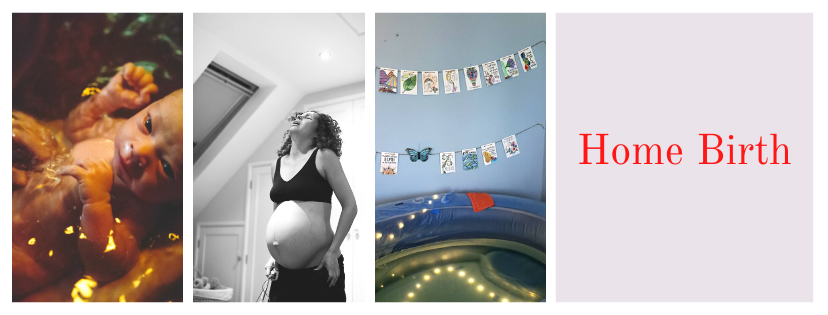Home Birth Benefits
For centuries giving birth at home was the norm. By the 1900s increasing numbers of women started having their babies at hospitals. However, as our understanding of anatomy, modern medicine, the mechanics of childbirth, and technology have significantly increased, more people have been willing to consider the option of having a home birth.
This option involves the participation of trained midwives or nurse-midwives in cases of low-risk, healthy pregnancies. As interest in home birth increases, the number of studies will continue to grow to provide us with a greater understanding of the related risks and benefits.
This option involves the participation of trained midwives or nurse-midwives in cases of low-risk, healthy pregnancies. As interest in home birth increases, the number of studies will continue to grow to provide us with a greater understanding of the related risks and benefits.
Home birth allows for you to have more control over the entire experience from prenatal visits through the labor itself and postpartum care. You have a much larger amount of autonomy during a home birth experience than in a hospital setting. With a home birth, you also have the freedom to choose your own labor positions and other elements of the birthing process. These include whether or not you eat or drink, take warm showers or baths, use candles or aromatherapy, etc.
Home birth may be significantly easier on your bank account. An average uncomplicated vaginal birth costs about 60% less in a home birth than in at a hospital.
Home birth studies have shown the safety of home birth with a trained professional is of equal or greater safety than that of a hospital birth.
Home birth has a low rate of interventions compared to a hospital.
Home birth requires no travel. The professionals travel to you and bring all the needed equipment to your home.
Other noted able benefits include
Home birth may be significantly easier on your bank account. An average uncomplicated vaginal birth costs about 60% less in a home birth than in at a hospital.
Home birth studies have shown the safety of home birth with a trained professional is of equal or greater safety than that of a hospital birth.
Home birth has a low rate of interventions compared to a hospital.
Home birth requires no travel. The professionals travel to you and bring all the needed equipment to your home.
Other noted able benefits include
- Religious and cultural considerations
- Fewer germs
- In home follow up visit
- Familiar surroundings
- Freedom of movement
- Privacy and intimacy
- We file all your paperwork (birth certificate)
- We help you make a plan
- We can take care of all your lab work
- We clean up after
Home Birth Challenges
With a home birth, your insurance policy may not cover any associated costs.
In the event of an emergency, you’ll need to get to a hospital. Time could be of the essence. Being able to reach a hospital quickly is recommended.
Home birth does not offer pain relief medications such as narcotics and epidurals. Home birth relies an alternative pain management such as hydrotherapy, massage, movement, and neuromatrix techniques.
There are usually some out of pocket costs upfront. Some common out of pocket costs include deposit, supply box, ultrasound, lab work if your insurance does not cover costs (this is rare).
In the event of an emergency, you’ll need to get to a hospital. Time could be of the essence. Being able to reach a hospital quickly is recommended.
Home birth does not offer pain relief medications such as narcotics and epidurals. Home birth relies an alternative pain management such as hydrotherapy, massage, movement, and neuromatrix techniques.
There are usually some out of pocket costs upfront. Some common out of pocket costs include deposit, supply box, ultrasound, lab work if your insurance does not cover costs (this is rare).
Is Home Birth Right For You?
Home Birth may be an option for you if:
Home Birth may not be for you if:
- You are having a healthy, low risk pregnancy
- You want to avoid an episotomy, cesarean section, epidural, and other similar interventions
- You want to share the experience with friends and family
- You want to be free to move around, change positions, take a shower, and eat or drink freely during labor
- You want to labor or birth in a birthing tub
- You want to enjoy the comforts of your home and familiar surroundings
Home Birth may not be for you if:
- You are diabetic
- You have chronic high blood pressure
- You are at risk for preterm labor
- Your partner does not fully support your decision to give birth at home
Our Midwives Will Bring the Following with Them the Day of Delivery
- Oxygen and resuscitation equipment for the baby, if needed
- IV’s for mom if she becomes dehydrated or needs additional nutrients
- Sterile equipment
- Fetoscopes and dopplers to listen to fetal heart tones
- Medications to slow or stop a hemorrhage
- Special herbal preparations, homeopathic remedies, massage supplies/techniques
- Items for suturing tears
How Often and Under What Circumstances Would We Transfer to The Hospital
Our current transfer rate is 1.7% compared to the national average of 37% for first time mothers.
The following are some reasons why a hospital transfer might be necessary:
The following are some reasons why a hospital transfer might be necessary:
- The mother desires to transfer
- Premature rupture of membranes (before 37 weeks)
- High blood pressure
- No progress with labor for an extended period of time that results in infection
- Fetal distress
- Cord prolapse
- Hemorrhage

